BENEFITS OF GREENING BUILDINGS
Greening buildings has a range of benefits, including water, micro-climate, energy, quality of life, ecology and economy. Find out which of these benefits you would like to generate for your project.
Water
Green buildings love water
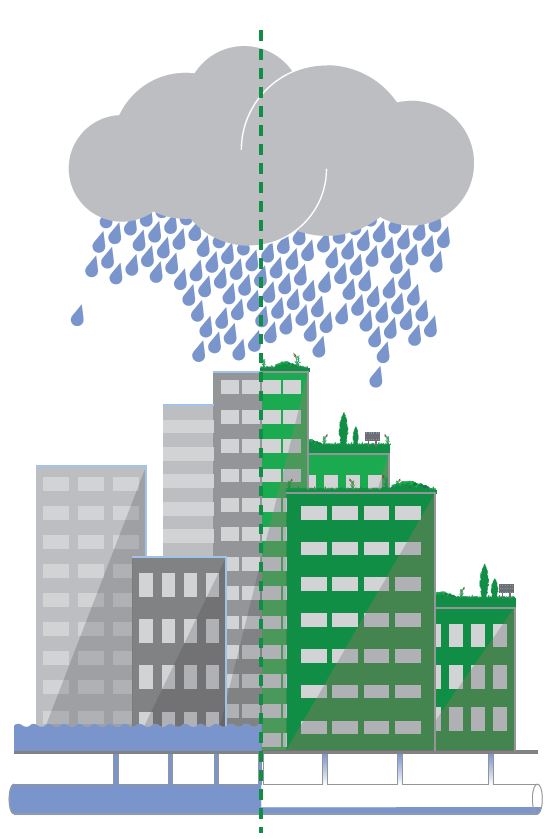
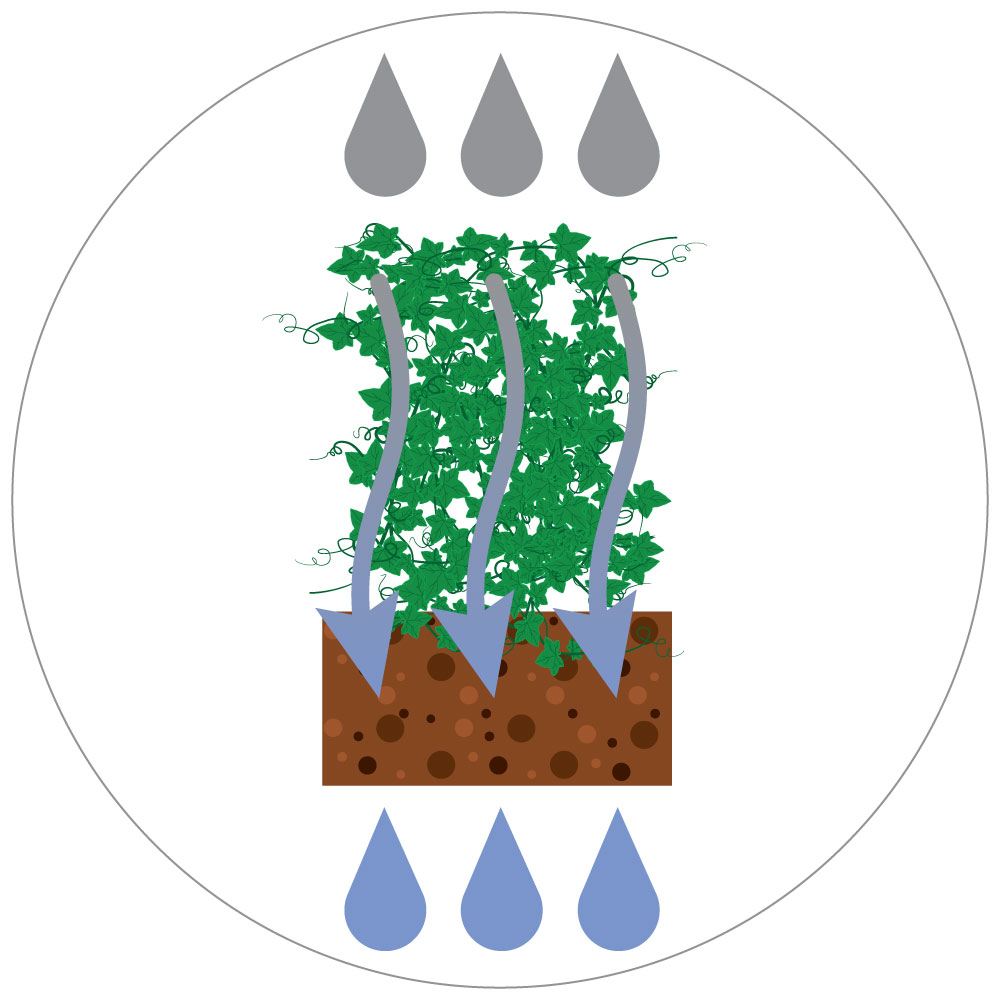
Extreme weather conditions, droughts and torrential rain occur more and more often. This development does not just effect agriculture, but also presents ever greater challenges for our cities. Due to the high level of surface sealing, water actually needed by plants, is diverted away by canal systems and cannot be used. At the same time, canal systems are beyond capacity during heavy rainfall events and floodings. Greening buildings is an ideal solution for current and future challenges.
Vegetation and the natural soil store water and release it via plants and substrate in a controlled way. In a natural system this release to the atmosphere is timed very well. Green and living walls and green roofs can retain 100% of the water or release it slowly with a time delay, which takes pressure of the sewer systems.
Polluted water is filtered and cleaned by green buildings. Specialised applications can even take on the function of a sewage treatment plant.
One square metre of a green roof with a substrate height of 25 cm (10 inches) can absorb the water content of a bath tub.
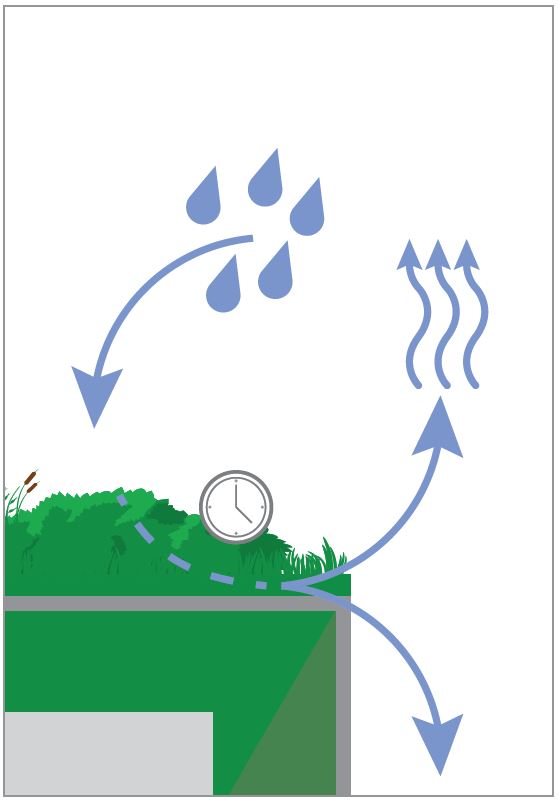
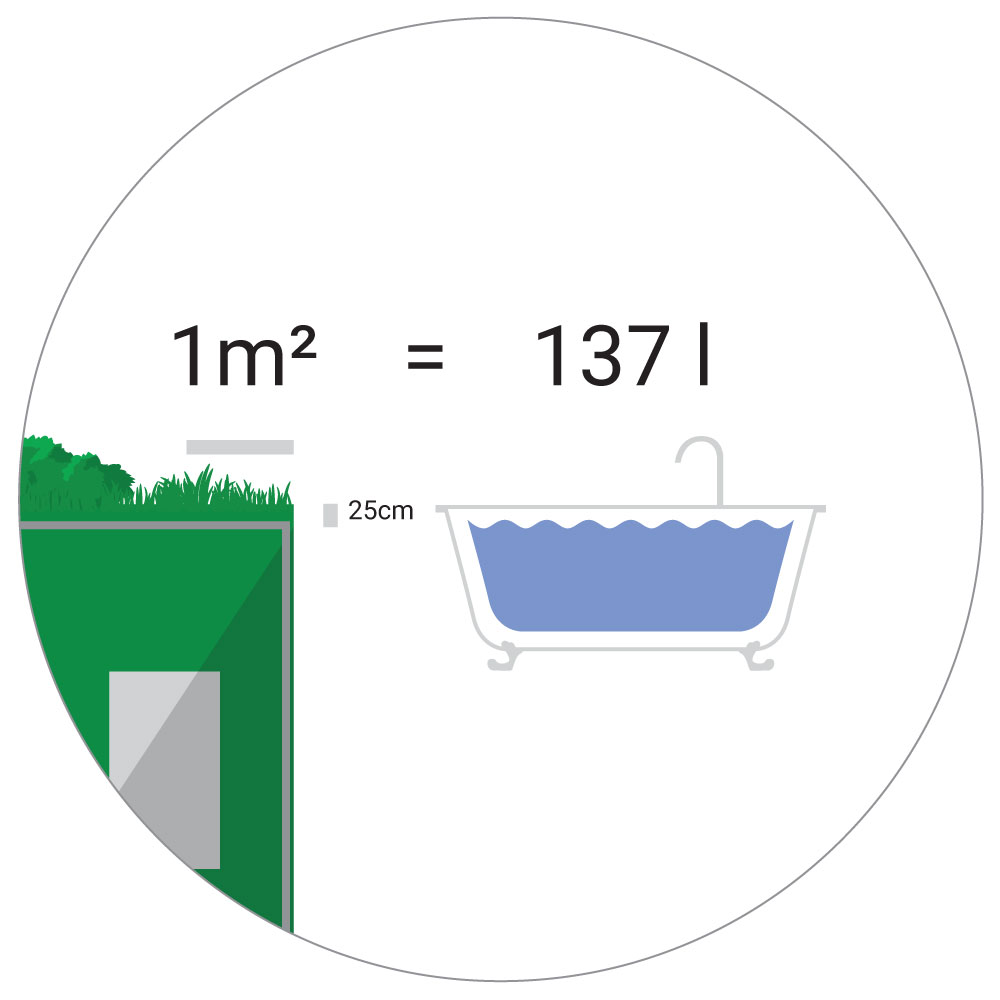
Microclimate
Plants are an air conditioning system for the outdoors

Urban areas heat up because of the presence of concrete, tarmac and glass. Greening buildings act as a natural air conditioning system and noticeably lowers the felt temperature in so called “heat islands”.

Plants carry out photosynthesis with the help of the sun. They produce oxygen and evaporate water. The latter removes energy from the surrounding area, which is causing a cooling effect. Building surfaces that have not been greened, heat up a lot more than the surrounding air during the day and continue to release heat energy hours later into the night.
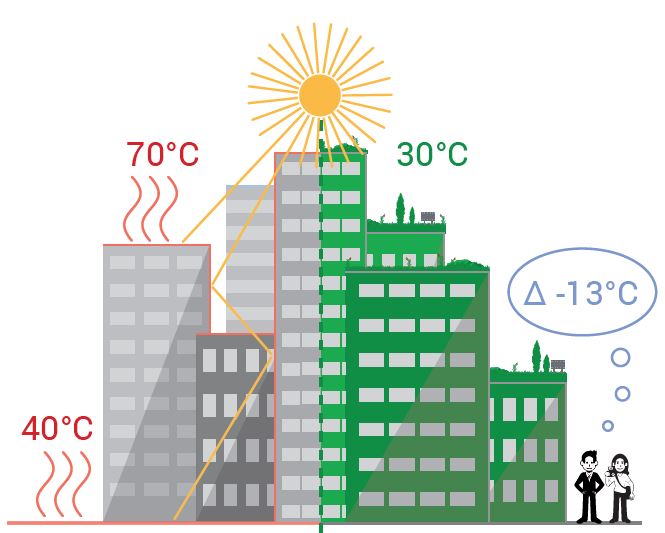
By contrast, leaf surfaces only have an insignificant temperature increase compared to the surrounding air and in addition create a more pleasant climate. By greening a building and the associated natural climatic effect the felt temperature can be lowered by up to 13 degree Celsius.
Following the slogan – let the plants sweat, not the city!
Energy
Greening buildings lowers the energy consumption
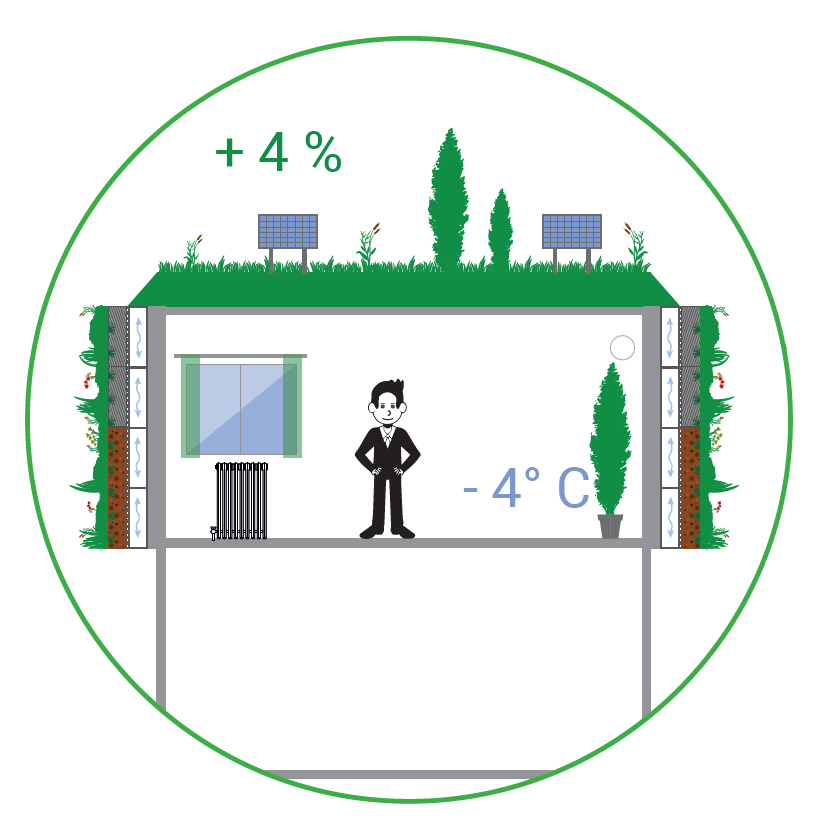
Thanks to greening buildings you can keep the temperature inside a building warmer in the winter and cooler in the summer. In addition, you can also make energy cost savings. Greening buildings can be combined very well with technologies such as solar panels or photovoltaics and cause an increase in efficiency.
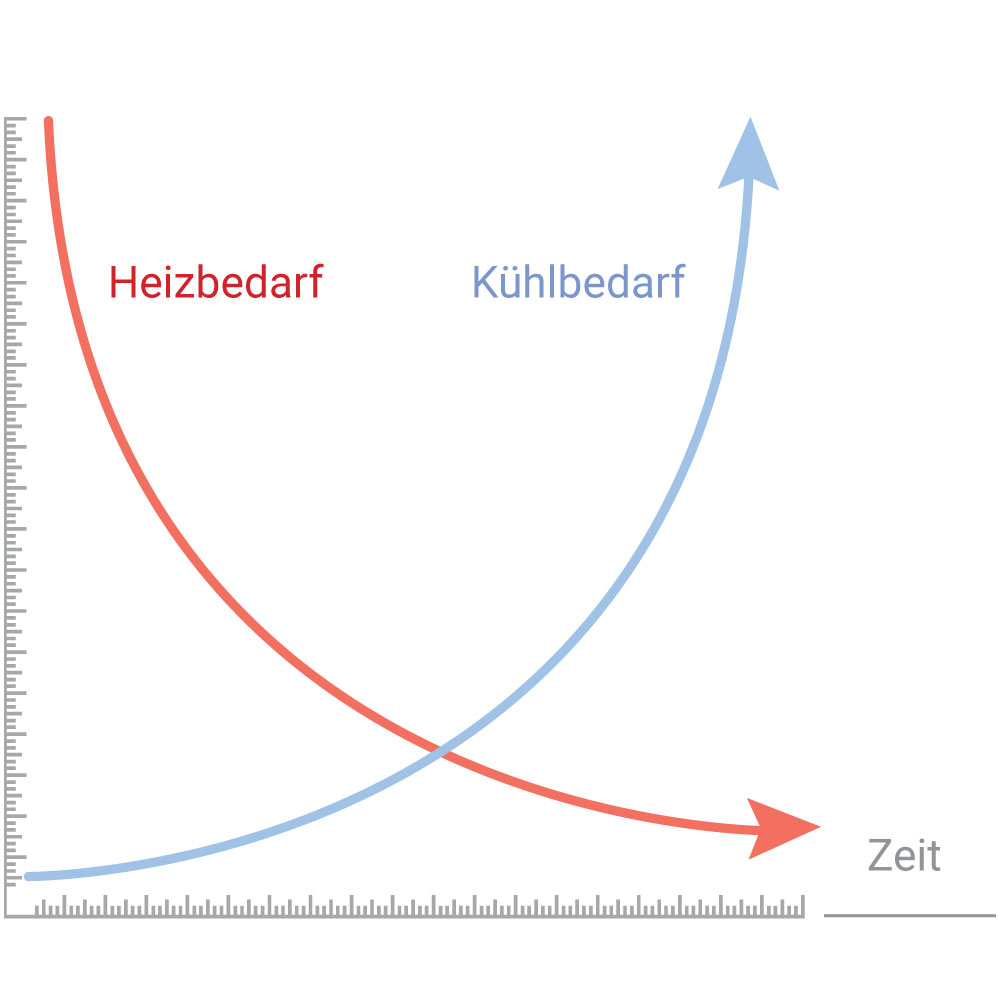
Energy consumption is rising globally. 40% of the energy is used for buildings. 70% of this energy is used to heat and cool buildings. The proportion used for air conditioning is increasing at an alarming rate.
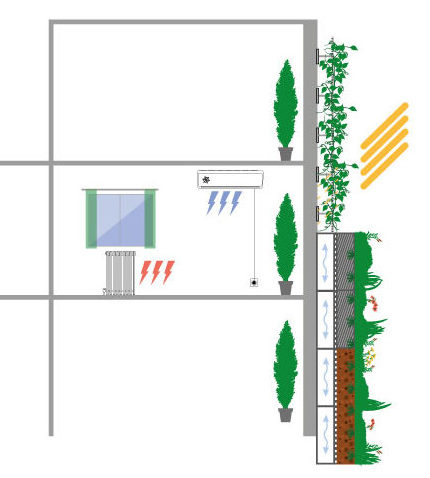
The leaves of climbing plants act like a natural curtain. The create shade and shield the building from the hot sunshine. During winter, the leaves fall off and let in more sunshine, so that the sun can warm the building. Vegetation covering the whole roof or facade can act as an insulation layer to protect from heat and cold.
Quality of life
Living plants promote health and wellbeing
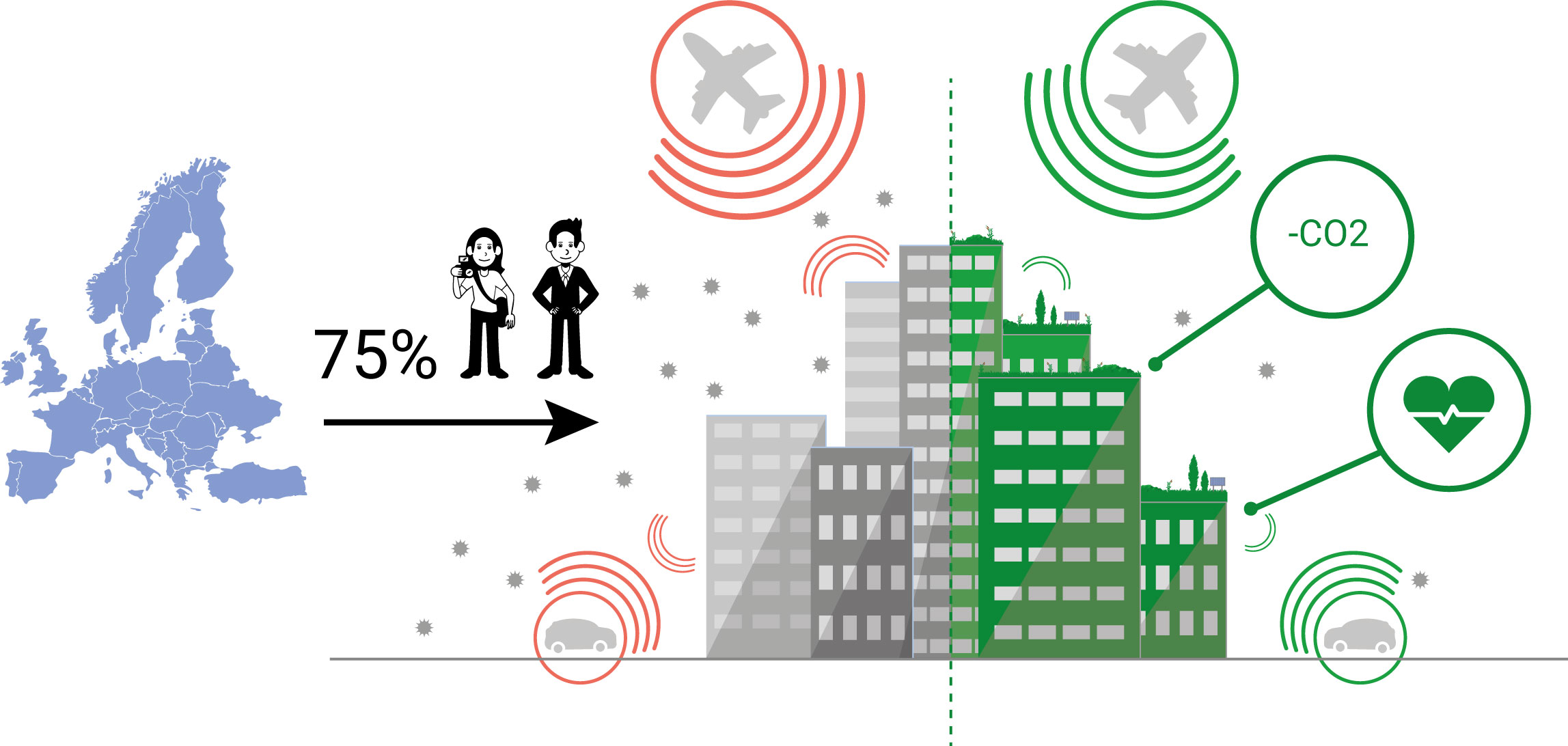
By 2020, 75% of the European population will live in towns and cities. That means, we will have to build, live and work at higher densities. This development will lead to social changes in the future, but also means we will be subject to greater health pressures. Our cities are becoming louder, the air quality is decreasing and important recreation areas are becoming rarer and tighter.
Greening buildings creates valuable recreation spaces and saves CO2. It also reduces noise and contaminant pollution. In addition to opportunities to get a bit closer to nature, a green environment has a positive effect on our health.

Studies have demonstrated that a green environment helps us to recover quicker from illnesses and to get ill less often. Productivity and concentration in the work place also increase.
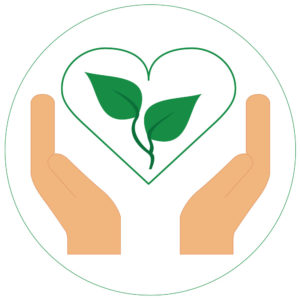
People evolutionary have a positive attitude towards nature. A natural environment enhances all of our wellbeing. Science calls this effect biophilia and phytophilia.
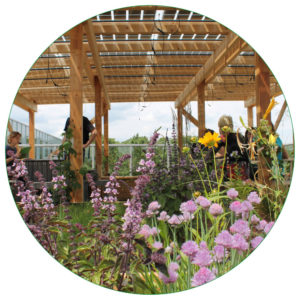
Intensive green roofs are equivalent to a full garden or even a park. They can be used all year round, provided the design protects from wind and sunshine.
Ecology & Environment
Nature conservation and buildings
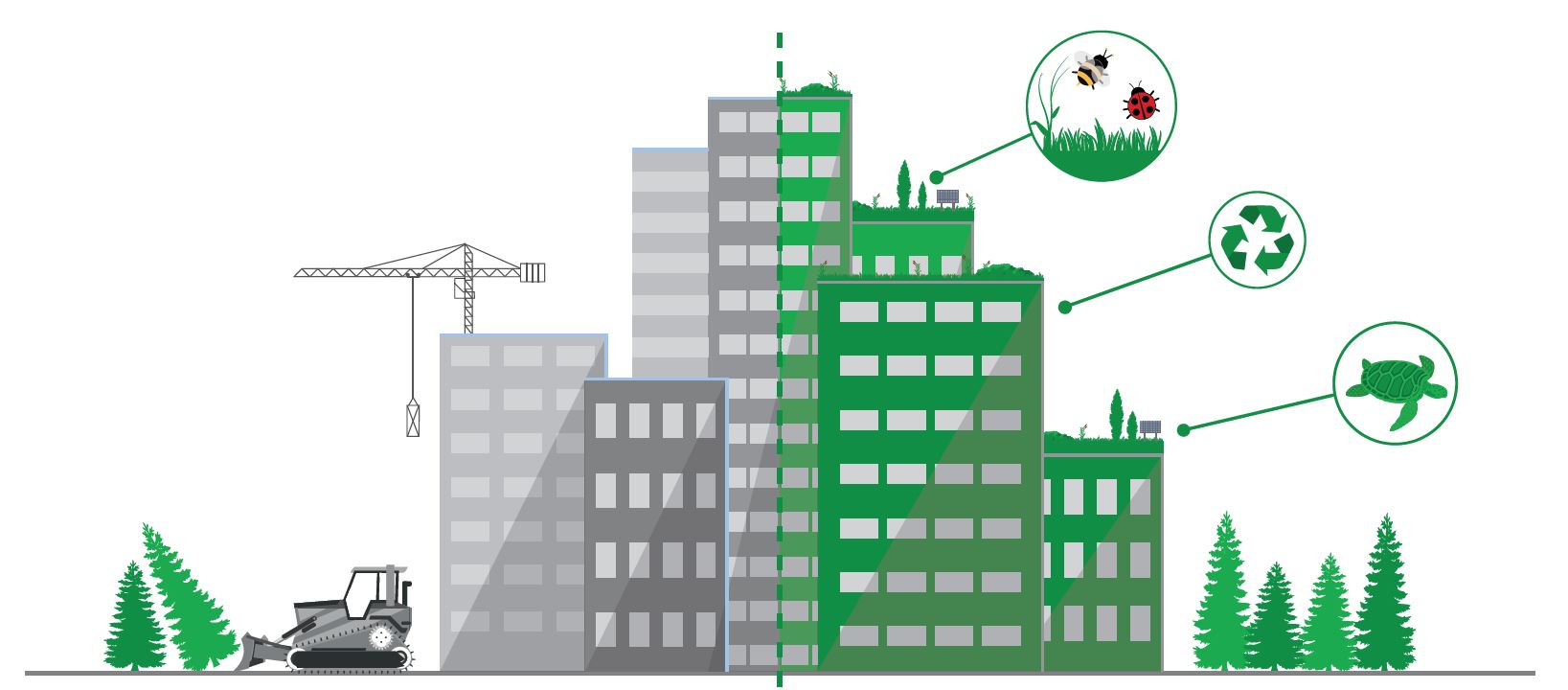
Austria develops 12.9 hectares of land every day (more than 12 football pitches). This development already represents a massive loss of natural habitat on a daily basis. At the same time, the consumption of natural renewable resources as well as finite raw materials increases. Greening buildings is a highly beneficial replacement for developed areas. In addition, mainly recycled building materials or natural, high quality and long-lasting building materials are used. This reduces the drain on natural resources. Plants and animals can find valuable habitats on green roofs and in green and living walls.
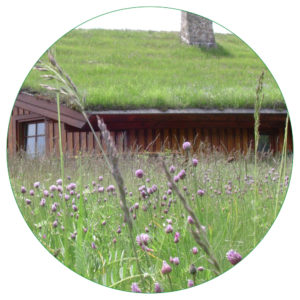
The life expectancy of greening building systems reaches up to more than 30 years. There are green roofs over 100 years old in Europe, some of them even harbour types of wild orchids.
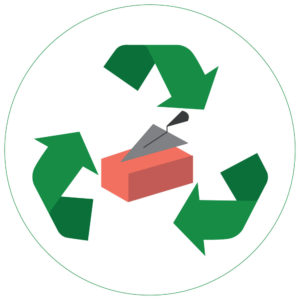
Green roofs use old recycled roof tiles among other things.

Many birds use green roofs as a nesting place and food source. This includes endangered species such as the crested lark (Galerida cristata).
Economy
Plants are worth every penny!
Traditional grey buildings are exposed to all kinds of weather conditions without any protection and need to be renovated from time to time (1).
Greening buildings in comparison acts as a protection shield (2) against weathering and reduces renovation and maintenance costs.
Green and living walls provide a natural sun screen and insulation (3). As green roofs, they are low-cost in maintenance and long-lasting.
Compared to traditional flat roofs, the service life of the roof sealing of a green roof is extended by at least 10 years (4).
Green space in and around properties increases the value by an average of 4-8% (5).
Greening buildings pays off because of the positive climatic and environmental consequences. They also create jobs in line with an innovative, future-orientated and sustainable economy (6).
